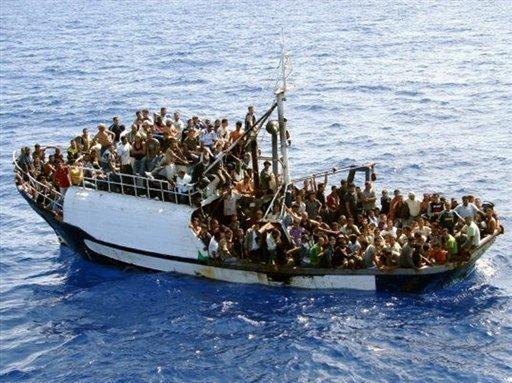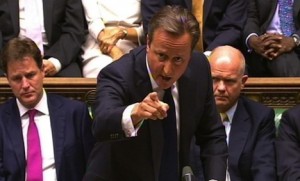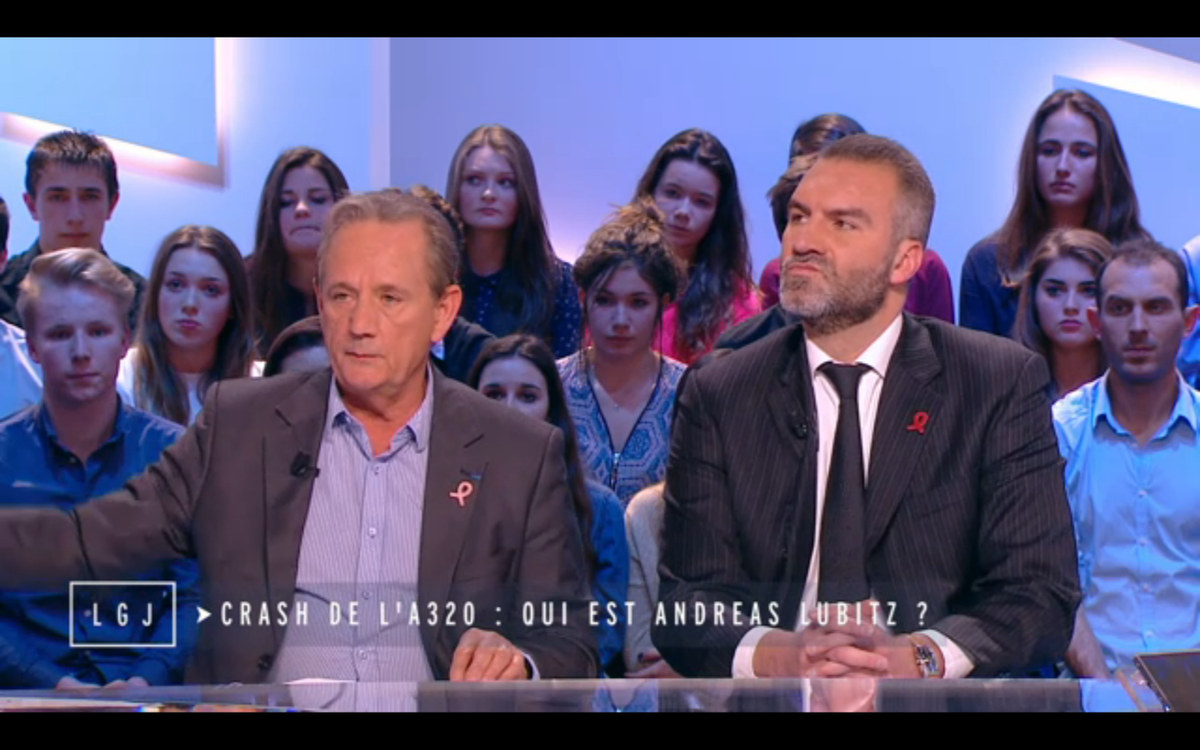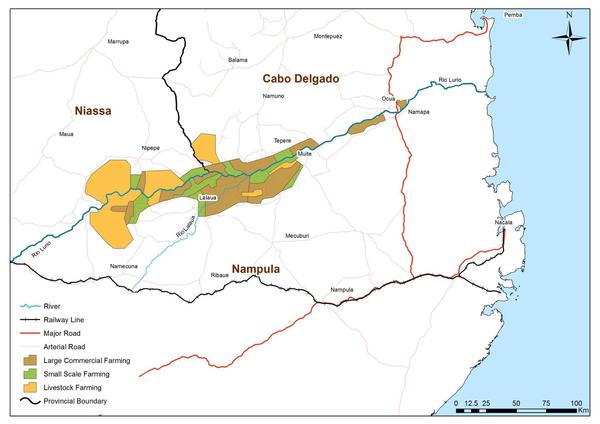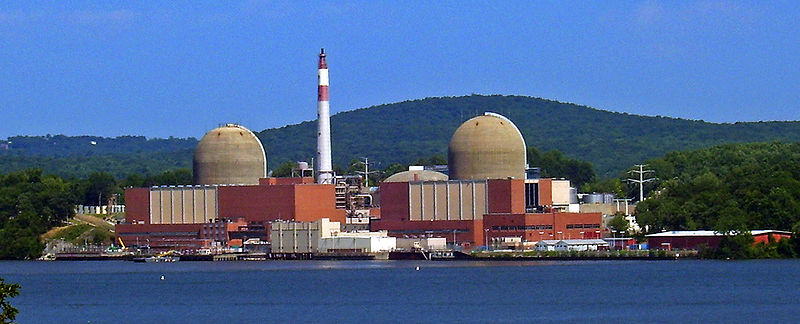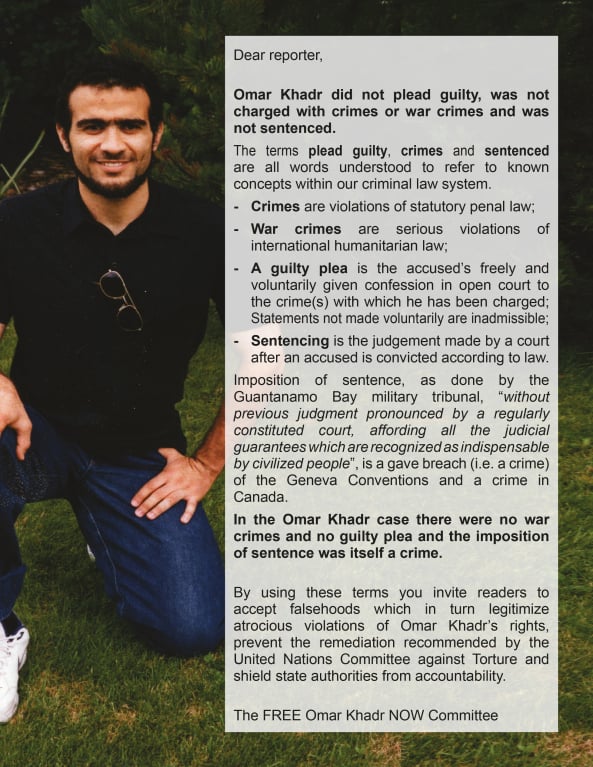LE XXIÈME SIÈCLE. LE SIÈCLE DE L’EAU.
L’un des enjeux majeurs entourant le devenir de l’humanité est la disponibilité d’une eau de qualité qui est devenue plus précieuse encore que le pétrole. C’est l’or bleu. C’est le fondement de la vie et c’est le vecteur par excellence des sédiments utiles au renouvellement des sols à l’intérieur des bassins de drainage. « L’eau est un solvant unique qui transporte les éléments nutritifs essentiels à la vie » (Sauver la Planète, p. 152). C’est aussi, dans les zones humides un filtre efficace. Un peu partout dans le monde, l’eau se raréfie en raison des changements climatiques qui engendrent des périodes de sécheresse prolongées comme on peut l’observer cette année en Californie, puis par suite de la surutilisation de l’eau dans les zones semi-arides irriguées, de la surexploitation des nappes aquifères et de la gouvernance déficiente du patrimoine hydrique dans les zones d’abondance.
« Aujourd’hui encore, les contentieux à propos de l’eau sont nombreux à travers le monde, notamment au Nord et au Sud de l’Afrique, au Proche-Orient, en Amérique centrale, au Canada et dans l’Ouest des États-Unis. Au Proche-Orient, par exemple, une dizaine de foyers de tensions existent. Ainsi l’Égypte, entièrement tributaire du Nil pour ses ressources en eau, doit néanmoins partager celles-ci avec dix autres États…Quant à l’Irak et la Syrie, ils sont tous deux à la merci de la Turquie, où les deux fleuves qui les alimentent, le Tigre et l’Euphrate, prennent leur source. L’eau de l’Euphrate a d’ailleurs souvent servi d’arme brandie par la Turquie contre ses deux voisins : grâce aux nombreux barrages qu’elle a érigés sur le cours supérieur du fleuve et qui lui permettent d’en réguler à sa guise le débit en aval, la Turquie possède là, en effet, un puissant moyen de pression ».
Nous aborderons cette problématique dans un deuxième article consacré à l’analyse des conflits actuels.
« Avec l’essor démographique et l’accroissement des besoins, ces tensions pourraient se multiplier à l’avenir. C’est ce que prédisent certains experts pour le XXIe siècle. D’autres en revanche pensent que la gestion commune de l’eau peut être un facteur de pacification. Ils mettent en avant des exemples étonnants de coopération : le plus fameux est celui de l’Inde et du Pakistan qui, au plus fort de la guerre qui les opposait dans les années 1960, n’ont jamais interrompu le financement des travaux d’aménagement qu’ils menaient en commun sur le fleuve Indus » (cnrs.fr).
Un très grand nombre d’études, d’analyses et de bilans ont été proposés à ce sujet au cours des dernières années. Mentionnons, notamment, celles du PNUE, le bilan dressé par Olivier Petitjean (mars 2009), l’ouvrage de Frédéric Lasserre et de Luc Descroix intitulé : Eaux et territoires. Tensions, coopérations et géopolitique de l’eau (2011) et une analyse de Martine Valo, journaliste de Planète, exposant une vue d’ensemble de la problématique : La crise de l’eau illustrée en 5 graphiques (mars 2015).
Nous présentons, dans cet essai, les enjeux entourant le processus de raréfaction de l’eau. Quelle est l’ampleur des risques liés à la diminution de l’eau dans les zones déjà fragilisées par la baisse des nappes phréatiques? Est-ce que la demande accrue de l’eau dans les mégalopoles cause ou causera des conflits majeurs? Quelle serait l’approche à privilégier dans la gestion du patrimoine hydrique mondial?
Nous exposons, dans une première partie, les enjeux globaux entourant la raréfaction de l’eau à l’échelle mondiale. Nous définissons le bassin versant, le cadre d’intervention à adopter dans la gestion du patrimoine hydrique et les modes d’établissement d’aires protégées avec sauvegarde du couvert végétal dans les bassins de réception des affluents des grands fleuves et sur les versants montagneux et la stratégie mondiale pour un partage harmonieux de l’eau dans les différentes régions du monde. Nous concluons en reprenant le Manifeste mondial de l’eau qui a été lancé au début du siècle.
Nous examinerons, dans un autre article, la problématique de l’approvisionnement de l’eau dans trois régions dans lesquelles les États s’affrontent ou bien cherchent à coopérer dans le partage de l’eau disponible, soit Israël, la Jordanie et la Palestine dans le bassin du Jourdain, l’Inde et le Pakistan dans le bassin de l’Indus et l’Égypte et les dix autres États qui se partagent les eaux du Nil.
I. Les zones arides (figure 1)
Les terres arides occupent 41% de la surface de la terre. Elles sont peuplées par plus de deux milliards d’êtres humains dont 90% habitent un pays en développement. Entre 10 et 20% des terres arides sont dégradées. Elles correspondent à 43% des terres cultivées de la planète (suds-en-ligne.ird.fr): « Elles sont en proie au processus de désertification dans lequel les sols deviennent de moins en moins fertiles (comme nous avons été à même de l’observer dans le Sahel). Ce phénomène global résulte des activités humaines et des variations climatiques…La désertification menace les zones arides du monde entier et a lieu à un rythme beaucoup plus soutenu que par le passé. Ce processus est renforcé par l’augmentation de la population qui a pour effet d’accroître la pression sur le territoire, à travers la mise en culture ou en pâturage de zones autrefois préservées » (seos-project.eu). La raréfaction de l’eau est accentuée également par les prélèvements faits pour approvisionner les mégalopoles comme c’est le cas à Los Angeles et dans la capitale du Mexique, problématiques que nous avons eu la possibilité d’étudier sur place.
Figure 1. Carte mondiale des zones arides
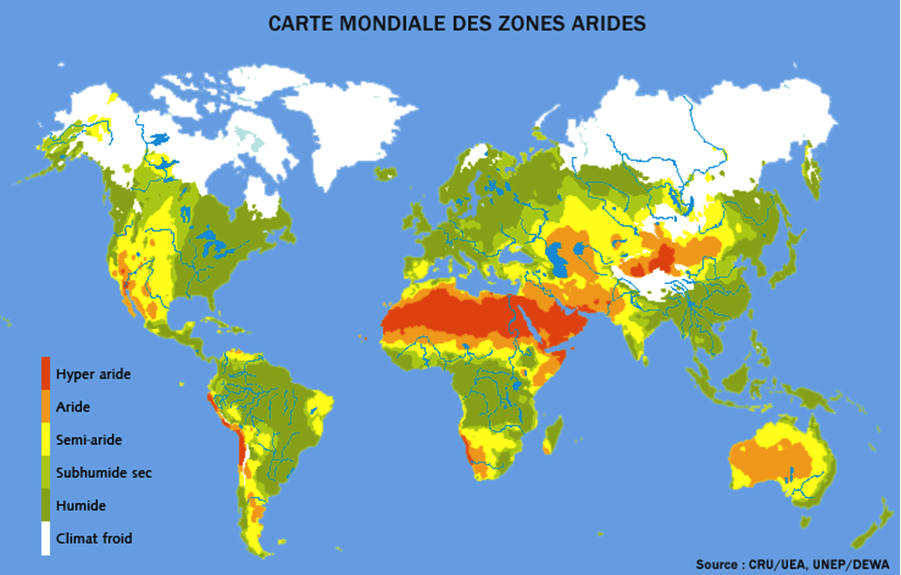
Source : https://suds-en-ligne.ird.fr/desertif/carte.html
La disponibilité de l’eau dans les zones semi-arides devient de plus en plus problématique. Dans plusieurs régions du monde marquées par un tel régime climatique l’eau n’est tout simplement pas au rendez-vous. Ces régions sont principalement le Sahel, les contours du désert australien, les zones influencées par les courants froids telles que la côte occidentale de l’Amérique du Sud et celle de l’Afrique, les hauts plateaux intérieurs eurasiens, les zones sous le régime climatique méditerranéen et les grandes prairies intérieures de l’Amérique du Nord et de l’Amérique du Sud. Plusieurs de ces zones sont attenantes aux grands déserts (figure 1). Ces zones, dans bien des cas, surexploitées, voient leurs nappes phréatiques s’abaisser rendant le couvert végétal très vulnérable aux incendies lors des périodes de sécheresses prolongées, une situation qui se présente fréquemment dans les régions marquées par le climat méditerranéen et, notamment, en Australie et en Californie. Le régime des précipitations, fort variable et même imprévisible, peut même forcer les habitants de ces régions à pratiquer la transhumance afin de pouvoir assurer leur subsistance.
Il y a six types de déserts qui sont au cœur des zones semi-arides et qui s’agrandissent à leur détriment. Les déserts de la zone intertropicale créés par la circulation atmosphérique globale caractérisés par de faibles précipitations, une forte évaporation et une forte insolation. Ce sont les déserts d’Australie, du Sahara et ceux de l’Afrique du Sud. Les déserts continentaux situés sur les hauts plateaux à l’intérieur des terres caractérisés par une très forte amplitude thermique (étés très chauds, hivers très froids) tels que ceux de Gobi et de Taklimakan (Asie de l’Est). Les déserts centraux en Australie, le Great Basin en Amérique du Nord, le désert de Monte en Amérique du Sud. Les déserts côtiers situés sur les côtes le long de zones de remontées d’eaux profondes caractérisés par de faibles précipitations, une hyperaridité et des brumes de soirée tels que celui de l’Atacama au Chili, le désert de Namibie, le désert de Baja California au Mexique et le désert de la côte atlantique marocaine. Les déserts d’abri de la zone tempérée (‘rain shadow deserts’) comme c’est le cas de la Vallée de la Mort aux USA abritée par la Sierra Nevada et caractérisée par de faibles précipitations, une forte évaporation et une forte insolation en y ajoutant, ici, les Cascades (figure 2), l’Himalaya et les Andes. Les déserts polaires (l’Arctique et l’Antarctique) reçoivent peu de précipitations, à cause de la présence de cellules anticycloniques (seos-project.eu). Nous avons été à même de faire des observations sur le terrain dans le désert de Mojave en Californie (figure 3), dans le désert de Djibouti et dans les déserts de Chihuahua, de Sonora et de la Baja California au Mexique (figure 4).
Figure 2. La Vallée de la mort, Californie, USA
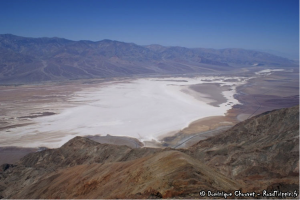
Source : http://www.roadtrippin.fr/californie/death-valley/death-valley.php
Figure 3. La dune de Kelso dans le désert Mojave, Californie, USA

Source : http://en.wikipedia.org/wiki/Kelso_Dunes
Figure 4. Le champ de boulders (roche granitique) de Cataviña , Baja California Sur, Mexique

Source : allposters.com
Figure 5. Madagascar. Zone semi-aride consacrée à l’élevage

Source : http://blog.agrophil.org/#post51
Figure 6. Parc national Tarangire, Tanzanie

Source : http://commons.wikimedia.org/wiki/File:Tarangire-Natpark800600.jpg
Figure 7. Populations affectées par la désertification (en millions de personnes)
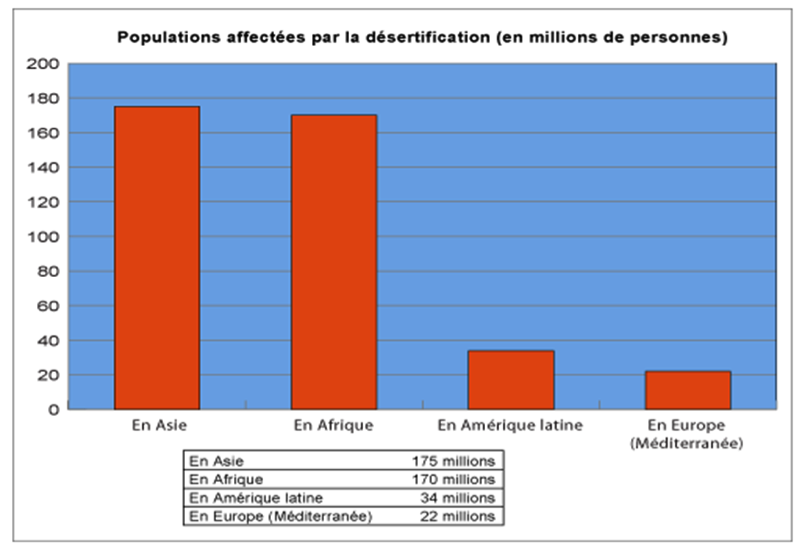
Source : https://suds-en-ligne.ird.fr/desertif/carte.html
Utilisation sans cesse croissante de l’eau. Pollution consistante et mortalité infantile élevée
Les rapports sur l’état du patrimoine hydrique mondial exposent les grands enjeux entourant la raréfaction de l’eau douce due à la surexploitation, à la pollution ou au gaspillage de la ressource. Ici, nous retenons les données de la stratégie pour l’Avenir de la Vie (1991) et les constats dressés en 2007 et 2012 avec GEO 4 et GEO 5.
1991.
Selon la stratégie pour l’Avenir de la Vie lancée en 1991, « le problème de l’eau est quasi planétaire et c’est l’homme qui en est la cause. Le monde prélève actuellement 35 fois plus d’eau qu’il y a trois cents ans et les prévisions indiquent que, d’ici l’an 2000, le volume prélevé aura encore augmenté de 30 à 35%. Notre utilisation de l’eau ne peut continuer à ce rythme si la population mondiale atteint 10 milliards d’habitants d’ici 2050. Aujourd’hui, de nombreux pays souffrent de graves pénuries d’eau. La concurrence entre les utilisateurs ne cesse d’augmenter et les institutions sont impuissantes à l’arbitrer. Les détournements et retenues d’eau ont des répercussions de plus en plus graves sur les écosystèmes (PNUE, WWF et UICN, 1991, p. 152).
2007. GEO 4.
Selon le PNUE, la dégradation de la qualité de l’eau due activités humaines continue de nuire à la santé humaine et aux écosystèmes. Trois millions de personnes meurent chaque année de maladies causées par une eau polluée dans les pays en développement, la majorité étant des enfants de moins de cinq ans. Les polluants les plus préoccupants sont les pathogènes microbiens et les charges excessives d’éléments nutritifs. L’eau contaminée par des microbes reste la principale cause des maladies et des décès à l’échelle mondiale. Beaucoup de nutriments conduisent à l’eutrophication des eaux en aval des cours d’eau et des zones côtières avec la perte d’usages bénéfiques pour les humains. La pollution diffuse provenant des surfaces terrestres, notamment l’agriculture et le ruissellement urbain, requiert une action urgente par les gouvernements et le secteur agricole. La pollution par les pesticides et les substances perturbant le système endocrinien de même que les sédiments en suspension sont également difficiles à contrôler. Il existe des preuves que le système intégré de gestion des ressources hydriques (IWRM) à l’échelle du bassin versant a contribué à améliorer le traitement des effluents et la restauration des zones humides, le tout accompagné par l’éducation et la sensibilisation du public et été une réponse efficace à tous ces problèmes (PNUE, GEO 4, p. 116-117).
2012. GEO 5.
« L’augmentation de l’utilisation efficace des eaux dans tous les secteurs est essentielle en vue d’assurer des ressources durables en eau pour tous les usages. La demande en eau de l’homme, avec seulement des améliorations limitées en efficacité, se multiplient et sont déjà insoutenables dans de nombreuses régions. Néanmoins, le potentiel existe pour des gains d’efficacité: efficacité de l’irrigation, par exemple, pourrait être augmentée d’environ un tiers simplement en mettant en œuvre la technologie existante. Au niveau local, les stratégies de demande et d’approvisionnement intégrées sont essentielles. Au niveau des bassins versants, des systèmes de répartition de l’eau plus efficaces et équitables sont nécessaires. Le commerce de l’eau pourrait virtuellement atténuer la demande en eau dans certains endroits ».
…« Il est difficile d’évaluer les progrès réalisés pour répondre aux exigences environnementales de l’eau. De meilleures stratégies et des outils sont nécessaires pour l’efficacité, la répartition équitable de l’eau entre les différents utilisateurs… La mise en œuvre intégrale des engagements internationaux et l’application des accords juridiquement contraignants…faciliteront l’utilisation durable de la ressource par l’homme et les écosystèmes. Réduire à la fois la pollution ponctuelle et non ponctuelle est impératif afin d’améliorer la santé de l’écosystème et de fournir de l’eau potable pour les humains. Des réalisations importantes dans la réduction de certains polluants ont eu lieu depuis 1992, bien que de nombreux plans d’eau soient encore affectés, et de nombreux nouveaux contaminants ont des effets mal compris. Le traitement des eaux usées municipales et industrielles est réalisable avec la technologie existante, mais nécessite une meilleure surveillance réglementaire, des investissements dans les infrastructures et dans la formation, en particulier dans les pays en développement. La gestion intégrée des éléments terrestres et hydriques et la participation des intervenants sont nécessaires pour réduire les pollutions de l’eau douce et les systèmes marins. L’amélioration de l’approvisionnement en eau et de l’assainissement est probablement le moyen le plus simple du rapport coût-efficacité de la réduction des décès liés à l’eau et aux maladies à l’échelle mondiale. Bien que l’objectif du Millénaire pour le développement (OMD) sur l’approvisionnement en eau ait été atteint en 2010, plus de 600 millions de personnes n’ont toujours pas accès à l’eau potable en 2015. La cible des OMD concernant l’assainissement est peu susceptible d’être atteint, avec 2,5 milliards de personnes actuellement sans des installations sanitaires améliorées; les populations rurales pauvres sont les plus touchées. Augmenter l’approvisionnement en eau et l’assainissement permettrait de réduire la charge mondiale de morbidité liée à l’eau d’environ 10 pour cent. L’augmentation des investissements dans les infrastructures, le renforcement des capacités et la réglementation sont nécessaires et la participation des femmes est essentielle pour la gestion de l’eau et la prévention des maladies d’origine hydrique. Des considérations sur le climat dans tous les secteurs liés à l’eau est essentiel pour faire face aux événements extrêmes et à l’augmentation de la variabilité climatique. Les inondations et les sécheresses causent encore des pertes en milliards de dollars à chaque année » (unep.org).
Selon OXFAM, aujourd’hui, près de 783 millions de personnes n’ont pas accès à l’eau potable, tandis que 2,3 milliards ne disposent pas d’installations sanitaires de base. Chaque année, les maladies liées à l’eau causent le décès de 2,2 millions de personnes, pour la plupart des enfants de moins de 5 ans (oxfam.qc.ca).
II. Le partage de l’eau
Un stress hydrique qui touche une large partie du globe (figure 8)
« Le stress hydrique – autrement dit, une ressource insuffisante pour répondre aux différentes activités humaines et aux besoins de l’environnement – commence lorsque la disponibilité en eau est inférieure à 1 700 mètres cubes par an et par personne. Quasiment les trois quarts des habitants des pays arabes vivent en dessous du seuil de pénurie établi, lui, à 1 000 m3 par an, et près de la moitié se trouvent dans une situation extrême avec moins de 500 m3, en Égypte et en Libye notamment » (lemonde.fr).
« Les pays en voie de développement ne sont pas les seuls touchés. « Comment l’Ouest américain, certaines provinces de Chine, le Mexique ou encore le Sud méditerranéen vont-ils faire dans trente ans s’interroge Richard Connor, expert pour l’ONU, qui participe pour la quatrième fois au rapport annuel sur l’eau. Le stress hydrique peut avoir des conséquences incalculables. Par exemple, en 2010, les sécheresses et les feux de forêt dans les steppes de Russie ont fait chuter les exportations de blé. Résultat : le prix du pain a doublé, ce qui a débouché sur le printemps arabe » (lemonde.fr).
Figure 8. Les régions à risque
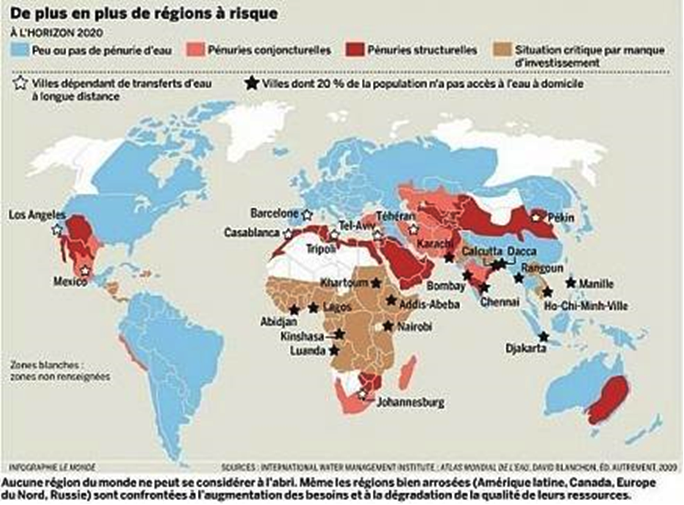
Source: eco-fr.e-monsite.com
La carte des régions à risques pour l’horizon 2020 (figure 8) illustre les diverses problématiques qui vont se poser. Les régions avec pénuries structurelles correspondent à la péninsule arabique, une bande longeant la mer Méditerranée allant de l’Égypte au Maghreb, au nord-est de l’Afrique du Sud, à toute la partie du Sud-Est australien, à la Chine du Nord, à la Mongolie, au Sud-Ouest des États-Unis et à une grande partie du territoire mexicain et, en particulier, dans les plateaux intérieurs. Les régions à pénuries conjoncturelles comptent une bonne proportion du territoire de l’Afrique du Sud, Madagascar, le nord de l’Inde, l’Iran, le Pakistan, le Proche-Orient et une portion des plateaux intérieurs asiatiques. Les aires dont la situation est considérée critique en raison du manque d’investissements correspondent à l’Afrique subsaharienne entre le Sahel et l’Afrique du Sud.
Plus de neuf villes dépendent de transferts d’eau à longue distance, soit Los Angeles, México, D.F, Johannesburg, Casablanca, Tripoli, Barcelone, Tel-Aviv, Téhéran et Pékin.
Les villes dont 20% de la population n’a pas accès à l’eau à domicile sont Calcutta, Djakarta, Rangoun, Karachi, Khartoum, Lagos, Abidjan, Addis-Abeba, Bombay, Chennai, Manille, Kinshasa, Luanda, Nairobi, Ho-Chi-Minh-Ville et Dacca, des villes dont les infrastructures ne peuvent donc répondre à tous les besoins d’approvisionnement et d’assainissement des eaux.
Selon le PNUE, « un tiers de la population mondiale vit dans des pays qui souffrent d’un stress hydrique modéré ou fort c’est-à-dire où la consommation d’eau dépasse de 10% les ressources renouvelables d’eau douce. Quelques 80 pays, comptant 40% de la population mondiale, souffraient au milieu des années 90 de diverses pénuries d’eau et on estime que dans moins de 25 ans deux tiers de la population vivront dans un pays connaissant un stress hydrique » (GEO 3, 2002, p. 150).
Selon un rapport de l’ONU rendu public récemment, « si rien ne change, la planète devrait faire face à un déficit global en eau de 40% d’ici 2030. La gestion de l’eau est inadaptée. L’irrigation intensive, le rejet incontrôlé de pesticides et de produits chimiques et l’absence de traitement des eaux usées sont notamment montrés du doigt. Des régions de Chine, d’Inde et des États-Unis, ainsi que le Moyen-Orient, puisent dans des réserves souterraines de manière non durable ». Le rapport rappelle que « malgré des progrès considérables ces dernières années, 748 millions de personnes sont toujours privées d’accès à une eau protégée d’une éventuelle contamination » (C. Serrat, 2015, p. A3).
La mauvaise répartition de l’eau dans le Monde, source de conflits ou de coopération ?
Selon le CNRS, « avec 40000 km3 d’eau douce qui circule chaque année sur les terres émergées, on est en droit de penser que la ressource est suffisante . . . mais elle est très mal répartie car neuf pays se partagent 60% des réserves mondiales (USA, Canada, Russie, Chine, Inde, Brésil, Colombie, Pérou et Indonésie), mais l’Asie qui concentre 60% de la population mondiale, ne dispose que de 30% de la ressource disponible, et de même une moyenne par pays et par habitant qui varie de 1 à 20 000 entre les Émirats du Golfe persique et l’Islande ! Le réchauffement climatique et la raréfaction des pluies, la surexploitation agricole et les pollutions, mais aussi la surproduction poussant à la surconsommation, combinés avec la croissance exponentielle de 7 milliards d’êtres humains aujourd’hui, 8,5 milliards en 2030 et de 9 à 10 milliards en 2050, font que la quantité d’eau disponible par habitant ne cesse de diminuer » (cnrs.fr).
Or, comme le montre cette carte, une bonne moitié des pays dans le Monde, dépendent à plus de 30% d’une ressource en eau extérieure à leur territoire, qui est donc une source de conflit possible avec des pays voisins. L’eau est une ressource qui se fait rare. De nombreux experts prévoient des conflits pour le partage de cette ressource de plus en plus convoitée car il existe 263 bassins fluviaux partagés entre 145 pays. Car notamment lorsqu’un cours d’eau traverse une frontière, l’eau devient alors un véritable instrument de pouvoir aux mains du pays situé en amont. Qu’il soit puissant ou non, celui-ci a toujours théoriquement l’avantage, puisqu’il a la maîtrise du débit de l’eau (cnrs.fr).
Selon Olivier Petitjean, « la géographie de l’eau, c’est-à-dire les divisions entre bassins versants et la distribution de la ressource au niveau mondial, ne recoupe quasiment jamais les frontières administratives. Il suffit de superposer la carte politique du monde et celle des bassins versants pour révéler la réalité et l’ampleur de l’interdépendance entre régions et pays en ce qui concerne les ressources en eau. Les chiffres parlent d’eux-mêmes. On compte aujourd’hui 263 bassins versants transfrontaliers (50 de plus qu’il y a trente ans, en raison notamment de la dislocation du bloc soviétique). 19 pays se partagent le bassin du Danube, 11 ceux du Nil et du Niger, 9 celui de l’Amazone. 145 pays ont au moins une partie de leur territoire située dans un bassin transfrontalier. 30 sont entièrement situés à l’intérieur de tels bassins. 39 pays, représentant une population de 800 millions de personnes, dépendent pour moitié ou plus de ressources en eau qui trouvent leur origine à l’extérieur de leurs frontières. Des pays tels que l’Égypte, l’Irak, la Syrie, le Turkménistan ou l’Ouzbékistan, qui disposent tous de systèmes d’irrigation étendus sur lesquels repose une bonne part de leur fortune économique, dépendent quasi entièrement de l’eau de fleuves prenant leur source dans les pays voisins » (partagedeseaux.info).
En se référant aux données historiques le même auteur présente un bilan plutôt optimiste: « Les données historiques semblent d’ailleurs confirmer que l’interdépendance débouche le plus souvent sur la coopération entre pays plutôt que sur des conflits, infirmant ainsi les prévisions alarmistes. On cite souvent le conflit entre Lagsah et Umma, deux cités-États mésopotamiennes, vers l’an –2500, comme le seul cas répertorié de guerre engagée exclusivement sur la question de l’eau. Des historiens ont compté pas moins de 3 600 traités internationaux relatifs à l’eau entre 805 et 1984. Des chercheurs de l’Université d’État de l’Oregon ont étudié les données sur les 50 dernières années et ont conclu que sur 1 831 événements et initiatives internationaux relatifs à l’eau, plus des deux tiers étaient de nature coopérative et que l’immense majorité des cas de conflits en sont restés au stade de l’affrontement verbal. Dans 37 cas seulement (principalement au Proche-Orient), les pays concernés ont engagé une forme quelconque d’action militaire (tirs, destruction d’infrastructures, etc.) » (partagedeseaux.info).
« Ces mêmes chercheurs précisent que les conflits (verbaux ou armés) portaient principalement sur des problèmes de quantité d’eau partagée entre les pays (61 % des cas), sur des infrastructures (26 %), et seulement marginalement sur des questions de qualité de l’eau (4 %). Plusieurs cas récents donnent toutefois à penser que les conflits transfrontaliers liés à la pollution de l’eau pourraient prendre davantage d’importance dans l’avenir… Une cause récurrente de conflits est une action engagée unilatéralement par un pays d’amont (construction d’un barrage, détournement de l’eau) qui a des effets négatifs potentiels sur les pays d’aval » (partagedeseaux.info).
L’eau utilisée comme enjeu durant les conflits armés
Au XXème siècle, plusieurs actes de guerre ont éclaté en rapport avec l’approvisionnement en eau douce. Selon Oxfam Québec, « pendant la guerre du Vietnam (années 1960), de nombreuses digues ont été détruites ou endommagées par les bombardements continus. Selon les autorités du Vietnam Nord, entre 2 et 3 millions de personnes seraient mortes noyées ou de faim à la suite de ces attaques. En Irak, près de 1,5 million de sacs d’eau ont été distribués l’an dernier aux personnes déplacées ainsi qu’aux hôpitaux. Aujourd’hui, l’ONU recense près de 300 points chauds où l’eau pourrait devenir source de tensions. En Cisjordanie, les colons israéliens consomment en moyenne 620 mètres cubes d’eau par personne par an, comparativement à moins de 100 mètres cubes pour les Palestiniens (oxfam.qc.ca).
III. L’établissement d’aires protégées en tant que sauvegarde du couvert végétal dans les bassins de réception des affluents des grands fleuves et sur les versants montagneux
La mise en valeur des ressources naturelles est facilitée quand le cadre d’intervention correspond au bassin hydrographique. Il s’agit là de l’unité naturelle par excellence pour un mode d’aménagement du territoire tenant compte des conditions de renouvellement des ressources. Ce cadre permet de bien saisir les différentes composantes du milieu physique, les modalités du relief, les zones sécuritaires, les zones à risques, le bilan hydrique régional, la nature et la densité du couvert végétal ainsi que les patterns de l’utilisation du sol. Un bel exemple de l’application de ces principes s’est développé au Costa Rica. Celui-ci assure la sauvegarde des forêts des versants volcaniques de la Sierra centrale avec la création de parcs nationaux comme c’est le cas des volcans Arenal, Tenorio et Miravalles (areasyparques.com). Ces aires deviennent des zones de rétention d’eau précieuses pour l’approvisionnement des régions situées dans les plaines environnantes comme c’est le cas observé dans la province du Guanacaste. D’ailleurs, c’est le seul pays au monde dont les limites administratives correspondent à des aires de conservation dont les principes de création sont inspirés par les concepts à la base de l’établissement des Réserves de la Biosphère du Programme MAB de l’Unesco. Dans ces espaces on retrouve « des aires centrales, ayant comme fonction la protection de la nature et devant être protégées par la législation nationale (classées aires protégées); des zones tampon qui entourent ou jouxtent les aires centrales qui sont des zones de développement durable où les activités de production doivent rester compatibles avec les principes écologiques, dont l’éducation environnementale, la récréation et la recherche scientifique; des zones de transition (également dites “de coopération”), se prêtent aux diverses activités » (wikipedia.org) (figure 9).
Figure 9. Costa Rica. Aires de conservation
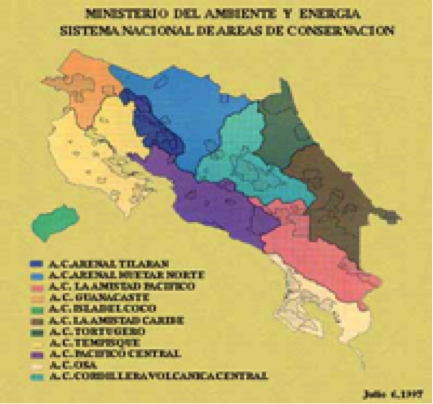
Source : http://www.acguanacaste.ac.cr/1997/mapaac.html
Selon la stratégie pour l’Avenir de la Vie «les politiques adoptées pour chaque bassin versant devraient être fondées sur une évaluation de la capacité de charge, revêtir une dimension plurisectorielle et prendre en compte les neuf principes suivants :
– L’utilisation des eaux de surface, souterraines et côtières à l’intérieur de chaque bassin devrait être planifiés sur la base d’évaluations de la quantité et de la qualité de l’eau;
– La consommation domestique, industrielle et agricole, ainsi que les volumes requis pour la conservation des zones humides, ne devraient pas excéder les limites d’un approvisionnement durable prenant en compte tous les besoins de l’écosystème;
– Des normes de quantité et de qualité devraient être fixées pour les différentes utilisations de l’eau, y compris le maintien des structures et fonctions de l’écosystème;
– Le volume des eaux d’irrigation devrait être limité au minimum requis pour lessiver le sel;
– La gestion de la qualité et du niveau des nappes d’eau souterraines devrait viser à minimiser les impacts écologiques comme la salinisation, la subsidence des sols, la libération de nutriments préjudiciables et la réduction du débit des cours d’eau;
– Afin de préserver le niveau de la nappe phréatique, il convient de calculer le taux potentiel de pompage d’après le taux de recharge naturel;
– Les risques sanitaires devraient être pris en compte dans le calcul des volumes d’eau requis et dans l’élaboration des plans d’irrigation;
– Les pratiques dommageables pour la qualité de l’eau, comme les travaux d’assèchement, les remblayages en déchets solides, et l’utilisation d’engrais, de pesticides et autres substances potentiellement polluantes, devraient être contrôlées de près afin que l’eau polluée n’affecte pas la qualité des eaux souterraines et que le ruissellement de surface ne dégrade pas la qualité des eaux fluviales;
– On devrait promouvoir des technologies propres et appliquer à la lutte contre la pollution le Principe de Prévention, visant à empêcher les rejets de substances toxiques ou synthétiques dont les effets à long terme ne sont pas connus » (UICN, PNUE et WWF, p. 157-158).
IV. L’UICN et la stratégie mondiale pour un partage harmonieux de l’eau dans les différentes régions du monde. Une vision pour le 21ème siècle – Lancement en 2000
Détérioration des écosystèmes et des ressources en eau
« L’eau qui a été dans le passé une source de vie hautement respectée, n’est, de nos jours, qu’un simple produit. On prend souvent sa valeur à la légère et on en fait couramment un usage abusif. De par le monde, l’utilisation de l’eau par les humains a déjà provoqué l’assèchement et la pollution de cours d’eau, de lacs et de nappes souterraines. L’eau potable est de plus en plus rare. D’ici l’an 2025, on prévoit que les prélèvements d’eau augmenteront de 50 pour cent dans les pays en développement, et de 18 pour cent dans les pays développés, ce qui aura des incidences redoutables sur les écosystèmes. Au cours du siècle dernier, plus de la moitié des zones humides du monde ont été détruites. Des espèces actuellement menacées dans le monde, dont le nombre dépasse 3 500, 25 pour cent sont des poissons et des amphibiens. Si les êtres humains continuent de prélever l’eau à ce rythme, la détérioration ou la destruction complète des écosystèmes terrestres, dulcicoles et côtiers qui sont indispensables à la vie sera inévitable ». (portals.iucn.org)
« Les causes de cette situation sont multiples et, il serait injuste de blâmer un seul groupe d’utilisateurs. Nous sommes tous responsables de l’état des ressources. La croissance des populations et de la consommation, le développement de l’infrastructure, les changements de vocation des terres et l’utilisation indue des sols, la surexploitation des espèces et des écosystèmes, ainsi que la pollution de l’eau, du sol et de l’air par des substances chimiques et des agents biologiques, tous mettent en péril les fonctions des écosystèmes producteurs de nos ressources en eau douce. Nous semblons incapables de mettre au point des plans d’action sociaux et politiques cohérents pour remédier à ces prélèvements et à cette détérioration sans borne. Le déclin des ressources et l’accès nettement inéquitable à celles qui restent font naître partout dans notre société des conflits qui, à certains endroits, laissent présager l’explosion d’actes de violence ». (portals.iucn.org).
Un tel avenir est inacceptable. Toutefois, des expériences un peu partout dans le monde démontrent qu’il existe des solutions de rechange. À l’aide de pratique écologiquement durables et des mesures de conservation qui existent, il est possible de réaliser la vision dont traite ce document.
Nous devons choisir, et c’est maintenant qu’il faut le faire (portals.iucn.org).
Conclusion
Selon GEO-4, « en tant que principal moyen d’intégration sur la surface terrestre, l’eau possède un fort potentiel pour réduire la pauvreté, accroître la sécurité alimentaire, améliorer la santé humaine, contribuer à des sources d’énergie durables et fortifier l’intégrité des écosystèmes et leur durabilité. Les biens et services liés à l’eau représentent des opportunités significatives pour la société et les gouvernements en vue d’atteindre ensemble les objectifs du développement durable et ce tel qu’on l’a reconnu dans la Déclaration du Millénaire et lors du Sommet mondial sur le développement durable, le tout dans le contexte de la réalisation des OMD » (GEO-4, 2007, p. 149).
Jules Dufour
Centre de recherche sur la Mondialisation
Nous présentons ici le texte du Manifeste de l’eau pour un nouveau contrat mondial de Ricardo Petrella. Celui-ci expose, les grands enjeux géopolitiques, économiques et sociaux du partage et de la gestion de l’eau à l’échelle mondiale.
Le droit de tous à la vie
Nous venons d’Afrique, d’Amérique Latine, d’Amérique du Nord, d’Asie, d’Europe. Nous nous sommes rassemblés à trois reprises en 1998 sans autre légitimité et représentativité que celle d’être des citoyens concernés par le fait qu’1 milliard et 400 millions de personnes sur 5,8 milliards d’habitants de la planète n’ont pas accès à l’eau potable, source primordiale de vie. Ce fait est inacceptable. Or, le risque est grand qu’en 2020, lorsque la population mondiale atteindra environ les 8 milliards d’êtres humains, les personnes n’ayant pas accès à l’eau potable s’élèvent à plus de 3 milliards. Cela est inadmissible. On peut, on doit empêcher que l’inadmissible devienne acceptable. Comment ?
Nous pensons qu’il sera possible de le faire en appliquant les principes et les règles ci-dessous.
L’eau “source de vie” appartient aux habitants de la Terre en commun.
En tant que “source de vie” fondamentale et non-substituable de l’éco-système Terre, l’eau est un bien vital qui appartient aux habitants de la Terre, en commun. Aucun d’entre eux, individuellement ou en groupe, ne devrait avoir le droit d’en faire son appropriation privée. L’eau est un bien patrimonial commun de l’humanité. La santé individuelle et collective en dépend. L’agriculture, l’industrie, la vie domestique y sont liées. Il n’y a pas d’accès à la production de la richesse sans accès à l’eau. L’eau, on le sait et tout le monde le dit, n’est pas une ressource comme les autres ; elle n’est pas une marchandise échangeable, monnayable. Son caractère irremplaçable fait que toute communauté humaine -et chacun de ses membres- a le droit d’avoir accès à l’eau, en particulier à l’eau potable, en quantité et qualité nécessaires et indispensables à la vie et à l’activité économique.
Principes
Le droit à l’eau est un droit inaliénable individuel et collectif
L’eau appartient davantage à l’économie des biens communs et du partage de la richesse qu’à l’économie de l’accumulation privée et individuelle et de la prédation de la richesse d’autrui. Alors que le partage de l’eau a été souvent dans le passé source majeure d’inégalités sociales, nos civilisations d’aujourd’hui reconnaissent que l’accès à l’eau est un droit fondamental, inaliénable, individuel et collectif. Le droit à l’eau fait partie de l’éthique de base d’une “bonne” société humaine et d’une “bonne” économie. Il appartient à la société dans son ensemble et aux différents niveaux d’organisation sociétale, selon le double principe de co-responsabilité et de subsidiarité, de garantir le droit d’accès pour tous et pour toute communauté humaine sans discrimination aucune de race, de sexe, de religion, de revenu, de classe sociale.
Principes
L’eau doit contribuer à la solidarité de vie entre communautés, pays, sociétés, sexes et générations
Ce n’est pas parce que les ressources en eau douce sont inégalement distribuées sur Terre, ou parce que le revenu est aussi très inégalement réparti entre les êtres humains et les pays de la planète, qu’il doit y avoir également inégalité d’accès à l’eau entre personnes et communautés humaines. De même, l’inégalité dans la distribution de la ressource et des revenus ne signifie pas que les peuples riches en eau et les personnes riches en revenu puissent en faire l’usage qu’ils veulent, voire la vendre (ou l’acheter) “à l’étranger” pour en tirer le maximum de profit (ou de jouissance). Il est temps que l’eau cesse d’être, dans de nombreuses régions du monde, source de grandes inégalités entre les hommes et les femmes, ces dernières supportant tout le fardeau des activités domestiques liées à l’eau. Il y a encore aujourd’hui, à l’aube du troisième millénaire, trop de guerres entre États voisins à cause de l’eau, car les États concernés, qui se trouvent en meilleure position géo-économique, utilisent l’eau comme un instrument au service de leurs intérêts stratégiques de puissance “hégémonique” locale. Il est possible de soustraire l’eau aux logiques de l’Etat-puissance pour la rendre res publica sous la tutelle de l’État-citoyen.
Principes
L’eau est une affaire de citoyenneté et de démocratie
Créer les conditions nécessaires et indispensables pour que l’accès à l’eau soit effectif et optimal, c’est l’affaire de tout le monde. C’est une affaire aussi entre générations. Il appartient en effet, aux générations actuelles d’utiliser, valoriser, protéger, conserver les ressources en eau de manière à ce que les générations futures puissent jouir de la même liberté d’action et capacité de choix que nous souhaitons pour nous actuellement. Le citoyen doit être au centre des décisions. La gestion intégrée durable et solidaire de l’eau est du domaine de la démocratie participative, représentative et directe. Elle dépasse les compétences et les savoir-faire des techniciens, des ingénieurs, des banquiers. L’usager (consommateur solvable et non-solvable) a un rôle important à jouer par ses choix judicieux et ses pratiques guidées par les principes d’une économie et d’une société durables.
Principes
Toute politique de l’eau implique un haut degré de démocratie au niveau local, national, continental, mondial
Par définition, l’eau appelle une gestion décentralisée et transparente. Les dispositifs de la démocratie représentative doivent être renforcés. Un champ considérable est ouvert aux dispositifs de la démocratie participative au niveau des villages, des villes, des bassins aquifères, des régions. Des cadres réglementaires clairs au niveau international et mondial doivent faire émerger et rendre visible la politique durable et solidaire de l’eau au niveau de la communauté mondiale. Les instances parlementaires sont appelées à jouer un rôle fondamental dans la construction d’un droit mondial de l’eau au cours des vingt prochaines années. Nous pensons aussi qu’il est urgent et indispensable de (re)valoriser les pratiques locales et traditionnelles. Un patrimoine considérable de savoirs et de compétences et de pratiques communautaires solidaires, d’une très grande efficacité, a été dilapidé. Il risque d’être détruit encore davantage dans les années à venir.
Principes
L’accès à l’eau passe nécessairement par le partenariat. Il est temps de dépasser les logiques des “seigneurs de la guerre” et des conflits économiques pour l’hégémonie et la conquête des marchés
La citoyenneté et la démocratie se fondent sur la coopération et le respect mutuel. Elles vivent par et dans le partenariat. “Partenaires pour l’eau” est le principe inspirateur de tous les dispositifs (tels que “les contrats de rivière”) qui ont permis ces derniers temps de surmonter efficacement les conflits qui dans certaines régions du monde ont traditionnellement envenimé les relations entre communautés riveraines ou partageant le même bassin hydrographique. Nous soutenons, bien entendu, un partenariat local/national/mondial, public/privé réel, fondé sur le respect des diversités, où les multiples logiques et cultures en présence peuvent équitablement contribuer à la gestion intégrée, solidaire et durable de l’eau, dans l’intérêt général. Un partenariat qui ne serait que formel, soumis, en réalité, aux logiques et aux intérêts des acteurs privés en compétition acharnée entre eux pour la conquête du marché -ce qui serait inéluctablement le cas si l’eau devait être reconnue comme étant surtout un bien économique et un bien marchand- ne pourrait que nuire à l’objectif de l’accès à l’eau pour tous et de la gestion intégrée, durable et solidaire des ressources en eau.
Principes
Nous pensons que la prise en charge financière de l’eau doit être à la fois collective et individuelle selon les principes de responsabilité et d’utilité
Assurer l’accès de base à l’eau pour la satisfaction des besoins vitaux élémentaires et fondamentaux de toute personne et de toute communauté humaine est une obligation pour la société dans son ensemble. C’est la société qui doit assumer collectivement la couverture de l’ensemble des coûts relatifs à la collecte, production, stockage, distribution, utilisation, conservation et recyclage de l’eau en vue de fournir et garantir l’accès à l’eau dans la quantité et en qualité considérées comme étant le minimal vital et nécessaire indispensable. L’ensemble de ces coûts (y compris les externalités négatives qui ne sont pas prises en compte par les prix du marché) sont des coûts sociaux collectifs au niveau des communautés humaines de base. Ceci devient encore plus vrai et significatif à l’échelle d’un pays, d’un continent et de la société mondiale. Leur financement doit être assuré par voie de répartition collective. Les mécanismes de tarification individuelle, selon des prix progressifs, doivent intervenir à partir d’un usage de l’eau dépassant le minimum vital nécessaire et indispensable. Au-delà du minimum vital, la progressivité des prix est fonction de la quantité utilisée. En outre, tout abus et excès dans l’usage doivent être considérés illégaux.
Pour que ces principes et ces règles deviennent des réalités vivantes au cours des 20-25 prochaines années, lorsque deux milliards d’êtres humains viendront s’ajouter à la population actuelle, nous proposons que les mesures suivantes soient prises et mises en oeuvre, sorte de “Contrat Mondial de l’Eau”, selon deux axes majeurs. •la constitution d’un “réseau de parlements pour l’eau”
•la promotion de campagnes d’information, de sensibilisation et de mobilisation autour de “L’eau pour tous”.
Nous proposons d’outiller l’initiative du Contrat Mondial de l’Eau d’un instrument de collecte et d’analyse de données (quantitatives et qualitatives) les plus rigoureuses possibles, grâce à la mise en place progressive d’un Observatoire Mondial des Droits de l’Eau.
Constitution d’un Réseau de Parlements pour l’Eau
C’est aux Parlements, organes principaux de la représentation politique dans les sociétés “occidentalisées”, ou aux institutions comparables dans d’autres contextes civilisationnels, que revient la responsabilité de modifier les législations existantes en application aux principes et aux règles ci-dessus explicités. Définir un corpus juridique nouveau en matière d’eau, non seulement au plan local et national mais également au plan international et mondial (un “droit mondial de l’eau”) constitue une tâche primordiale face au vide juridique existant dans ce domaine à l’échelle mondiale. La priorité est à donner à un “Traité Mondial de l’Eau” fondé sur le principe de l’eau en tant que bien vital patrimonial commun de l’humanité. Ce “traité”, par exemple, exclurait l’eau de toute convention internationale commerciale (dans le cadre de l’OMC), comme c’est déjà le cas pour le domaine culturel.
Propositions
Promotion de campagnes d’information, de sensibilisation et de mobilisation concernant:
•1 le développement (ou modernisation) des systèmes de distribution et d’assainissement des eaux pour les 600 villes des pays d’Afrique, d’Asie, d’Amérique Latine et d’Europe orientale et Russie qui auront plus d’un million d’habitants en 2020 et dont le système d’eau est déjà aujourd’hui inadéquat, obsolète, voire inexistant.
•2 la lutte contre les nouvelles sources de pollution des eaux dans les villes des pays d’Amérique du Nord, d’Europe Occidentale et du Japon dont le contamination du sol et des nappes phréatiques de surface et en profondeur est de plus en plus inquiétante, grave et, dans certains cas, irréversible. Il s’agit, concrètement, à partir de programmes locaux au niveau urbain de réaliser l’objectif de la création de “3 milliards de robinets d’eau”. Les mouvements associatifs, les ONG, les syndicats, les scientifiques ont à cet égard un rôle essentiel et déterminant à jouer.
A cette fin, la priorité est à donner à : •La réforme profonde des systèmes actuels d’irrigation liés au mode de production agricole (et agro-alimentaire) industriel, intensif. Les solutions existent, entre autres l’irrigation “goutte à goutte”.
L’agriculture actuelle “moderne” est la principale consommation des ressources en eau douce de la planète (70% des prélèvements totaux mondiaux, dont la très grande partie est liée à l’irrigation). Or, 40% de l’eau d’irrigation se perd chemin faisant. En outre, ses excès sont à l’origine de graves atteintes et menaces à l’environnement par la salinisation des sols et l’hydromorphisme (engorgement)
•Un moratoire de 10 à 15 ans en ce qui concerne la construction de nouveaux grands barrages dont l’on connaît désormais les inconvénients considérables à court et à long terme pour l’environnement, les populations, la gestion intégrée et durable de l’eau.
Mise en place d’un Observatoire Mondial des Droits de l’Eau
Le but de l’observatoire sera de collecter, produire, distribuer, disséminer les informations les plus rigoureuses et fiables possibles en matière d’accès à l’eau du point de vue des droits individuels et collectifs, de la production d’eau, son utilisation, sa conservation/protection, sa gestion durable et démocratique. L’Observatoire devrait devenir l’un des dispositifs d’information et de communication de référence mondiale notamment pour la valorisation des pratiques effectives de partenariat réel et de gestion solidaire.
Éditions Labor, Bruxelles, 1998, 160 pages
Personnalités ayant participé à la rédaction de l’ouvrage :
Mario Soares, ancien Président de la République du Portugal
Mario Albornoz, Professeur à l’Université de Quilmès, Argentine
Raoul Alfonsin, ancien Président de la République d’Argentine
Driss Ben Sari, Professeur à l’Université de Rabat, Maroc
Rafael Blasco Castany, Presidencia de la Generalitat Valenciana
Rinaldo Bontempi, Membre du Parlement européen, Italie
Larbi Bouguerra, Professeur, Groupe de Lausanne, Tunisie
David Brubaker, Global Resource Action for the Environment, USA
Joao Caraça, Directeur à la Fondation Gulbenkian, Portugal
Susan George, Directeur adjoint du Transnational Institute, France/USA
Antonio Gonçalves Henriques, Vice-Président de l’Istituto do Aguà, Portugal
S.A.R. le Prince Laurent, Président de l’Institut Royal pour la Gestion Durable des Ressources Naturelles, Belgique
Candido Mendes, Sénateur, Président de l’Université Candido Mendes, Brésil
Hasna Moudud, Présidente, National Association for Resources Improvement, Bangladesh
Sunita Narain, Directrice adjointe du Center for Science and Environment, Inde
José Antonio Pinto Monteiro, Ministre de l’Environnement, Cap-Vert
Pierre-Frédéric Ténière-Buchot, Mission Eau, Programme des Nations-Unies pour l’Environnement (PNUE), France
Abou Thiam, Professeur à l’Université de Dakar, Sénégal
Lars Ulmgrend, Secrétaire Général du Stockholm Institute, Suède
Anders Wijkman, Directeur au Ministère des Affaires Etrangères, Suède
Riccardo Petrella, Secrétaire du Comité, Président du Groupe de Lisbonne, Italie
(http://www.waternunc.com/fr/manifeste_eau.htm).
Deuxième partie :
Un bilan hydrique mondial. Le partage de l’eau dans les bassins versants du Jourdain, du Nil et de l’Indus
Jules Dufour, Ph.D., C.Q., géographe. Professeur émérite. Membre de la Commission mondiale des Aires protégées de l’Union Internationale de la nature (UICN), Gland, Suisse
Membre, COFEX-Nord. Projet d’aménagement hydroélectrique de Grande Baleine, Nunavik (1992-1994). Expert, Bureau d’audiences publiques sur l’environnement (BAPE). Projet d’aménagement hydroélectrique de la rivière Sainte-Marguerite, SM-3 (1993)
Commissaire, Bureau d’audiences publiques sur l’environnement (BAPE). Projet de la dérivation des eaux de la rivière Manouane (2001)
Références
AFP-WASHINGTON. 2015. Le 5 avril 2015. En Californie, le changement climatique «n’est pas un canular». En ligne : http://www.lapresse.ca/environnement/dossiers/changements-climatiques/201504/05/01-4858461-en-californie-le-changement-climatique-nest-pas-un-canular.php?utm_categorieinterne=trafficdrivers&utm_contenuinterne=cyberpresse_B13b_etats-unis_286_section_POS2
AP. 2012. L’eau, une source probable de conflits dès 2022. Montréal, Le Journal Le Devoir. Le 23 mars 2012. En ligne : http://www.ledevoir.com/environnement/actualites-sur-l-environnement/345744/l-eau-une-source-probable-de-conflits-des-2022
ASSOCIATION GOODPLANET.ORG. 2009. Home. 192 pages.
ARTHUR-BERTRAND, Yann. 2009. Home. Éditions de Noyelles, pp. 134-150.
CNRS. L’eau, une source de conflits entre nations. En ligne : http://www.cnrs.fr/cw/dossiers/doseau/decouv/mondial/05_eau.htm
COLLINS, HARPERCOLLINS PUBLISHERS. 2006. Terre fragile. Images d’une planète menacée. Londres, HarperCollins Publishers, pp. 191-218.
COMMISSION DE COOPÉRATION ENVIRONNEMENTALE. 2001. La mosaïque nord-américaine. Secrétariat de la Commission environnementale (CCE). La disponibilité de l’eau, pp. 26-34.
COOKE, Ron, Andrew Warren et Andrew Goudie. 1993. Desert Geomophology. Londres, UCL Press, 526 pages.
DUFOUR, Jules. 2008. 20 ans après Brundtland: Un bilan alarmant de l’état de santé de l’environnement mondial. Montréal, Centre de recherche sur la mondialisation (CRM). Le 2 janvier 2008. En ligne: http://www.mondialisation.ca/20-ans-apr-s-brundtland-un-bilan-alarmant-de-l-tat-de-sant-de-l-environnement-mondial/7696
EAU SECOURS. COALITION QUÉBÉCOISE POUR UNE GESTION RESPONSABLE DE L’EAU. 2015. Journée mondiale de l’eau. Marche citoyenne et Spectacle. Le 22 mars 2015. En ligne : http://www.globalresearch.ca/us-combat-forces-fbi-and-cia-in-ukraine-vice-president-biden-congratulates-poroshenko-for-violating-minsk-peace-agreement/5437859
ECO FRANCE. Guerres de l’eau et conflits dans le Monde. En ligne : http://eco-fr.e-monsite.com/pages/environnement/guerres-de-l-eau-et-conflits-dans-le-monde.html
HUMANITÉ ET BIODIVERSITÉ. 2015. Complètement à sec, la Californie rationne l’eau. Le 3 avril 2015. En ligne : http://www.humanite-biodiversite.fr/article/completement-a-sec-la-californie-rationne-l-eau
INTERNATIONAL INSTITUTE FOR SUSTAINABLE DEVELOPMENT (IISD). 2014. Faits marquants du Congrès mondial des parcs de l’UICN 2014. Bulletin du Congrès mondial de l’UICN. Le 18 novembre 2014. En ligne : http://www.iisd.ca/iucn/wpc/2014/html/crsvol89num15f.html
LAIME, Marc. 2015. Eau : crise humanitaire au Proche-Orient. Carnets d’eau. Le 9 avril 2015. En ligne : http://blog.mondediplo.net/2015-04-09-Eau-crise-humanitaire-au-Proche-Orient
LASSERRE Frédéric et Luc Descroix. 2011. Eaux et territoires. Tensions, coopérations et géopolitique de l’eau. Presses de l’université du Québec. 492 pages.
MacMahon, James. A. 1997. Deserts. New York. Alfred A. Knopf. 638 pages.
NATIONAL GEOGRAPHIC SOCIETY. 1993. Water. Precious Resource. Washington. D.C., National Geographic Magazine.
NATIONAL GEOGRAPHIC SOCIETY. 2002. A Thirsty Planet. Challenge for Humanity. Washington. D.C., National Geographic Magazine.
NOTRE-PLANETE-INFO. 2015. La sécheresse historique et persistante en Californie fait bondir le prix de l’eau (vidéo). Le 31 mars 2015. En ligne : http://www.notre-planete.info/actualites/4245-secheresse-Californie-prix-eau
OXFAM QUÉBEC. L’eau potable, l’hygiène et l’assainissement. En ligne : http://oxfam.qc.ca/oxfam-quebec-en-action/Eau_Hygiene_Assainissement?gclid=CN_OuPn4k8UCFSxn7AodQFQAcg
OXFAM QUÉBEC. H2O pour tous. En ligne : https://oxfam.qc.ca/sites/oxfam.qc.ca/files/Fiche6-Conflits_coop%C3%A9ration_et_eau.pdf
PETITJEAN, Olivier. 2009. L’eau, source de conflits et de coopération. Partage des eaux. Ressources et informations pour une gestion juste et durable de l’eau. Le 20 mai 2009. En ligne : http://www.partagedeseaux.info/L-eau-source-de-conflits-et-de-cooperation
PETRELLA, Ricardo. 1998. Le Manifeste de l’Eau. Pour un contrat mondial. En ligne : http://www.waternunc.com/fr/manifeste_eau.htm
PROGRAMME DES NATIONS UNIES POUR L’ENVIRONNEMENT (PNUE). 1982. L’état de l’environnement mondial, 1972-1982. Rapport du directeur exécutif. Texte manuscrit, p. 21-24.
PROGRAMME DES NATIONS UNIES POUR L’ENVIRONNEMENT (PNUE). 2002. L’avenir de l’environnement mondial 3. GEO-3. Le passé, le présent et les perspectives d’avenir. Bruxelles, de boeck. 445 pages.
PROGRAMME DES NATIONS POUR L’ENVIRONNEMENT (PNUE). 2005. Rapports de synthèse de l’évaluation des écosystèmes pour le Millénaire. Avril 2005.
PROGRAMME DES NATIONS POUR L’ENVIRONNEMENT (PNUE). 2007. Global Environment Outlook. GEO 4. environment for development. Communiqué de presse mondial. Les problèmes les plus graves de la planète persistent, avertit un rapport de l’ONU. 25 octobre 2007. 8 pages. En ligne : http://www.unep.org/Documents.Multilingual/Default.asp?DocumentID=519&ArticleID=5688&l=fr
PROGRAMME DES NATIONS POUR L’ENVIRONNEMENT (PNUE). 2012. Global Environment Outlook-5. Environment for the future we want. Printed and bound in Malta by Progress Press Ltd, Malta. PROGRESS PRESS LTD. 551 pages. En ligne : En ligne : http://www.unep.org/french/geo/geo5.asp
PROGRAMME DES NATIONS UNIES POUR L’ENVIRONNEMENT (PNUE). 2012. GEO-5. L’avenir de l’environnement mondial. Résumé à l’intention des décideurs. 20 pages. En ligne : http://www.unep.org/geo/pdfs/GEO5_SPM_French.pdf
SERRAT. Céline. 2015. L’ONU redoute une pénurie mondiale d’eau d’ici 15 ans. AFP-Paris, Montréal, Journal Le Devoir, le 22 mars 2015, p. A3.
VALO, Martine. 2015. La crise de l’eau illustrée en 5 graphiques. LeMonde.fr. Le 20 mars 2015. En ligne : http://www.lemonde.fr/ressources-naturelles/article/2015/03/20/la-crise-de-l-eau-illustree-en-5-graphiques_4597592_1652731.html
UICN, PNUE ET WWF. 1991. Sauver la Planète. Stratégie pour l’Avenir de la Vie. Gland, Suisse. 248 pages
UICN. 2000. Vision de l’eau et de la nature : stratégie mondiale de conservation et de gestion durable des ressources en eau au 21e siècle. 73 pages. En ligne : https://portals.iucn.org/library/node/7672
UNITED NATIONS ENVIRONMENT PROGRAM (UNEP). 2005. One Planet. Many People. Atlas of Our Changing Environment. En ligne : http://na.unep.net/atlas/onePlanetManyPeople/images/chapters/Atlas_Introduction_Screen.pdf
UNITED NATIONS ENVIRONMENT PROGRAM (UNEP). 2007. Global Environment Outlook. GEO 4. Environment for Development. Valetta, Malta, Progress Press LTD. 540 pages.
UNWATER. Launch of the World Water Development Report. Le 20 mars 2015. En ligne : http://www.unwater.org/news-events/news-details/en/c/281167/
WIKIMEDIA COMMONS. File:Tarangire-Natpark800600.jpg. En ligne : http://commons.wikimedia.org/wiki/File:Tarangire-Natpark800600.jpg
WIKIPEDIA. Integrated water resources management. En ligne : http://en.wikipedia.org/wiki/Integrated_water_resources_management





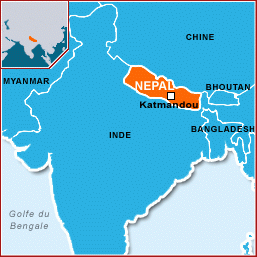 A lane veering northward off the circle through which Rita leads us is new to me. Well before reaching Muna’s neighborhood, it is evident that I’m venturing into an unhappy corner of Kathmandu where life is hard any day and still precarious, if not dangerous, after the quake. We three women reach a point where vehicles are prohibited; even foot traffic is unadvisable. Anyone without a mission here ought to stay away. And at midday I sense people here are uncustomarily scarce, and those here seem subdued.
A lane veering northward off the circle through which Rita leads us is new to me. Well before reaching Muna’s neighborhood, it is evident that I’m venturing into an unhappy corner of Kathmandu where life is hard any day and still precarious, if not dangerous, after the quake. We three women reach a point where vehicles are prohibited; even foot traffic is unadvisable. Anyone without a mission here ought to stay away. And at midday I sense people here are uncustomarily scarce, and those here seem subdued.

